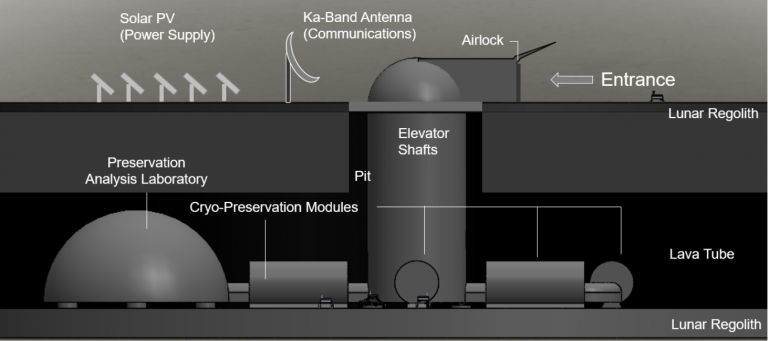In the event of a global catastrophe – which, let’s be honest, is seeming more and more likely nowadays – how would we protect the wide variety of plants and animals on Earth? A team of researchers has proposed a rather dramatic solution: a “Noah’s Ark” on the Moon that stores millions of samples of seeds, spores, sperm and eggs.
Extinctions are happening at such an alarming rate that some scientists suggest we’re heading into the sixth mass extinction event to occur on Earth. Since human activity is the leading cause of those deaths, it’s our responsibility to try to do something to help.
One way we can do that is to collect and store samples of species in “doomsday-proof” vaults, like the Svalbard Global Seed Vault. Located in the Arctic, this seed bank is home to almost a million samples of important food crops from around the world, preserving them in case of disaster. So-called “frozen zoos” perform a similar function for animals, preserving sperm, eggs, embryos, DNA or tissue samples.
The problem with these vaults is that they might not be as doomsday-proof as we’d like. In 2016 water from melting permafrost seeped into the Svalbard Seed Vault, demonstrating its vulnerability to the consequences of climate change. Sadly, few if any places on Earth will be completely safe.
By that logic, the safest place to put them would be not on Earth, right? That’s the thinking behind the new lunar ark concept put forward by researchers at the University of Arizona, which would establish a “global insurance policy” for plants, animals and fungi on the Moon.
In many ways, the Moon is a perfect location for this kind of facility. It’s freezing cold. It’s tectonically stable. There’s no weather or water to contend with. And there are no animals and very few humans to get in the way.
The team proposes that the lunar ark could be built inside lava tubes that were recently discovered just below the Moon’s surface. Elevator shafts would extend down into the facility, where samples can be stored in cryogenic preservation modules, chilling seeds to around -180 °C (-292 °F) and animal cells to -196 °C (-321 °F). The whole thing would be powered by solar panels up on the surface.

University of Arizona
There’s an added bonus to keeping the modules this cold. At cryogenic temperatures a phenomenon called quantum levitation can emerge, where a superconductor material will float above a powerful magnet. The two are inextricably linked at a fixed distance, which could be useful for suspending shelves of samples in midair, or having robots zip around the place on magnetic tracks.
“It’s like they’re locked in place by strings, but invisible strings,” says Jekan Thanga, an author of the paper. “When you get to cryogenic temperatures, strange things happen. Some of it just looks like magic but is based on tried and laboratory-tested physics principles at the edge of our understanding.”
One of the biggest hurdles to doing anything on the Moon is getting the materials there – weight is at a premium on rocket launches, and a project on this scale is quite weighty. But, the team says, it’s not insurmountable. The researchers estimate that it would take about 250 launches to transport 50 samples from each of the 6.7 million or so species on Earth.
“It’s not crazy big,” says Thanga. “We were a little bit surprised about that.”
The lunar ark is a fascinating concept, but of course at this stage it remains just that. The scientists say they plan to investigate further into just how the ark could be built and operated, including how the samples might be affected by factors like reduced gravity.
A paper describing the lunar ark concept was presented last weekend at the IEEE Aerospace Conference. The video presentation can be seen below.
Lunar Pits and Lava Tubes for a Modern Ark
Source: University of Arizona
Source of Article